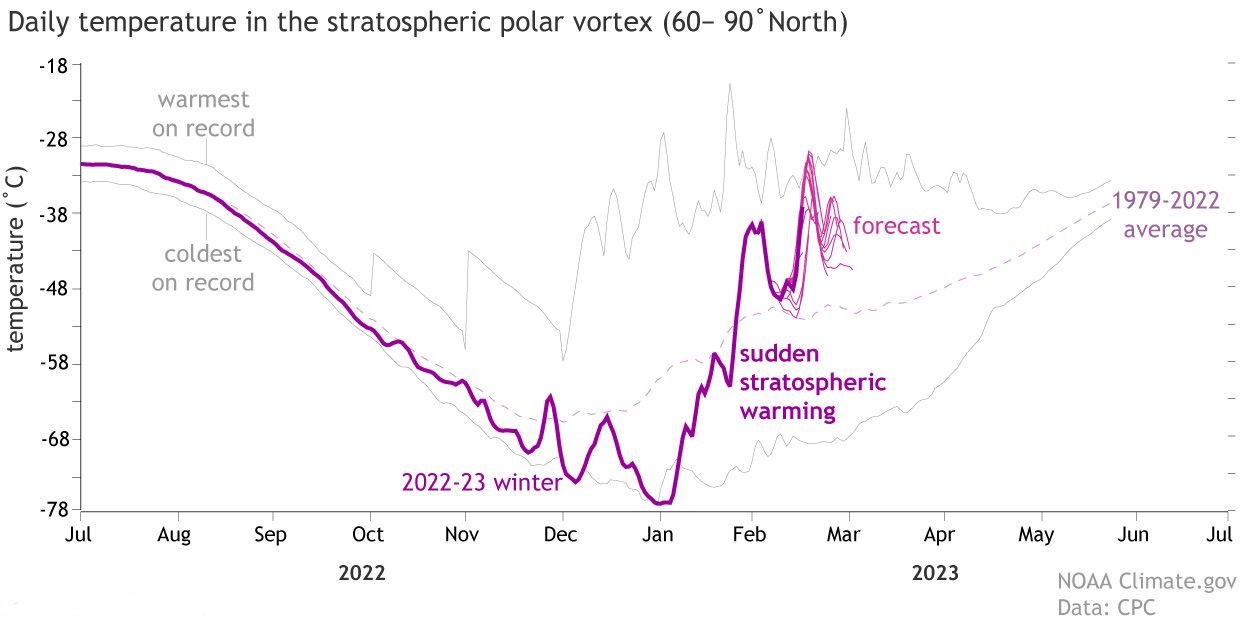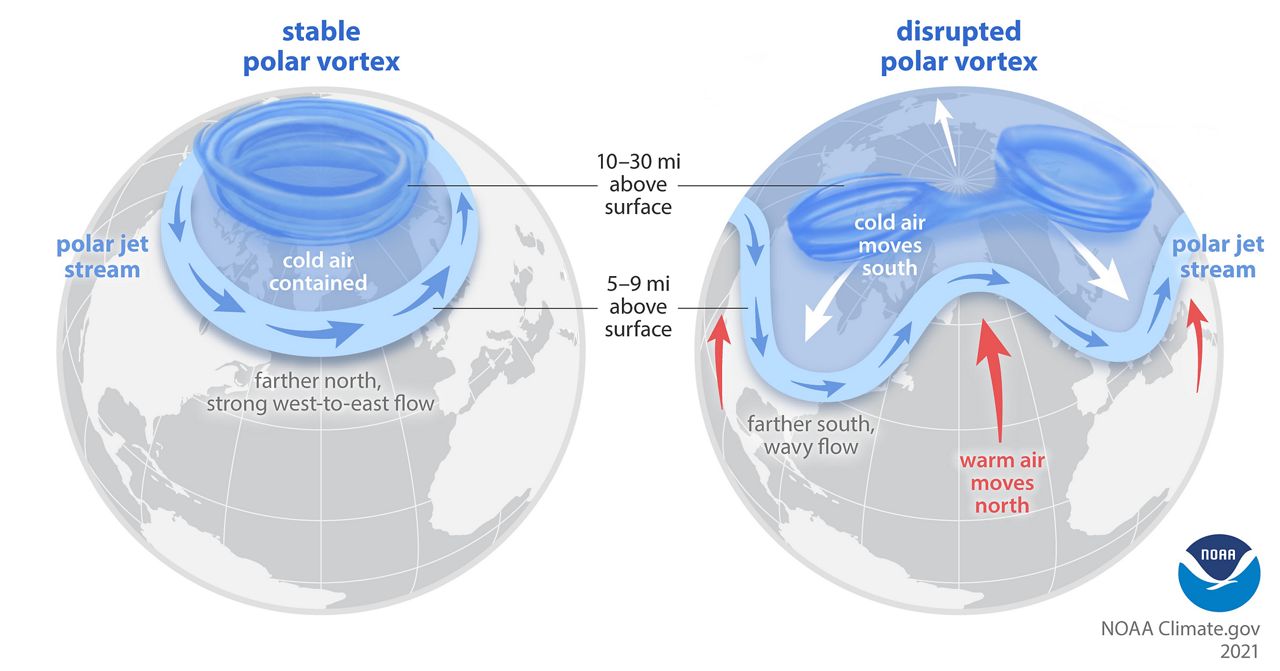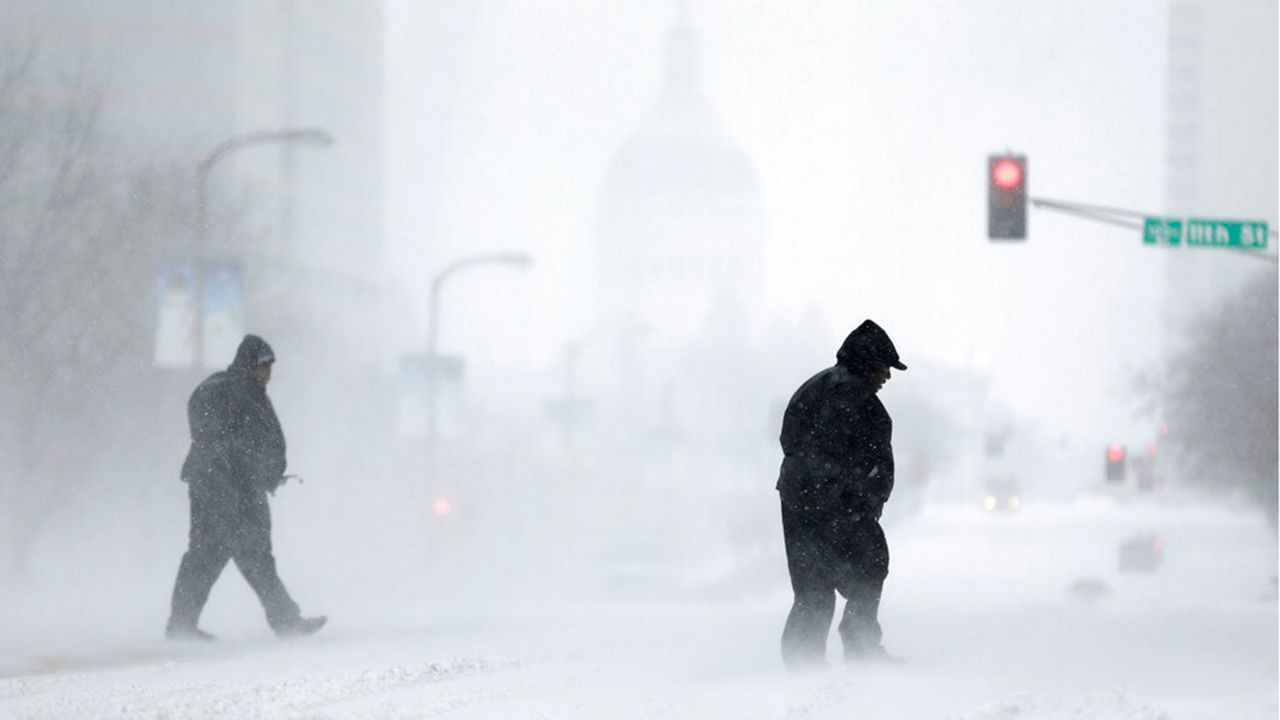You’ve almost certainly heard of the polar vortex. But what about "sudden stratospheric warming," a weather term that’s started making the rounds on social media? They’re related to one another, and they can play a big role in winter weather.
First, a quick review of the polar vortex. The one we care about lives in the stratosphere, the second-lowest layer of the atmosphere. The stratosphere is above where most of our weather happens, starting about 6 miles above the ground and reaching up about 31 miles.
That polar vortex forms in the fall as polar nights get longer and temperatures turn colder. In the spring, it breaks down as daylight returns and temperatures become more balanced.

But something else can make it break down during the winter, waves in the atmosphere. That’s where sudden stratospheric warming comes in.
The atmosphere has waves, just like the ocean. After all, it pretty much is an ocean... just made of air, not salt water. These waves rise up and down, and sometimes they’ll break and crash on the polar vortex, weakening it.
What happens if the vortex weakens enough? Its winds can reverse direction, causing cold air in the stratosphere to descend and quickly warm. And that’s where the name "sudden stratospheric warming" comes from.
"Sudden" doesn’t mean it happens out of the blue, completely unexpectedly. And "warming" is relative, since we’re still talking temperatures that are way below zero.

Forecasters try to get a sense of whether sudden stratospheric warming might happen because it can give clues about weather patterns a few weeks away.
Instead of a stable swirl keeping the arctic air bottled up, the polar vortex is knocked off-kilter, coming off the North Pole or splitting into a couple pieces. The frigid air mass sometimes spills southward, although it doesn’t always dump into North America. It can just as easily hit Europe or Russia.

Major sudden stratospheric warming events happen once every winter or two on average, according to NOAA. These can cause big cold air outbreaks, although not every cold wave can lead to sudden stratospheric warming.
It also turns out that El Niño can cause sudden stratospheric warming events–and polar vortex breakdowns–because of how it influences the pattern of waves in the jet stream in the late winter.
Our team of meteorologists dives deep into the science of weather and breaks down timely weather data and information. To view more weather and climate stories, check out our weather blogs section.
Justin Gehrts - Senior Weather Producer
Justin Gehrts is a senior weather producer for Spectrum News. He has well over a decade of experience forecasting and communicating weather information. Gehrts began his career in 2008 and has been recognized as a Certified Broadcast Meteorologist by the American Meteorological Society since 2010.




